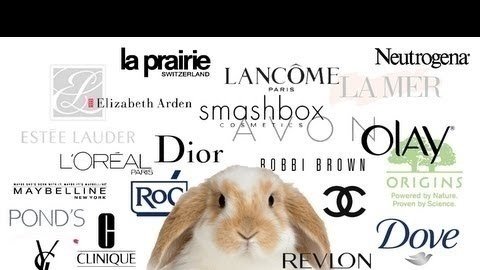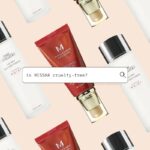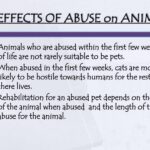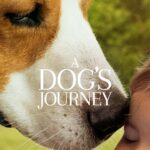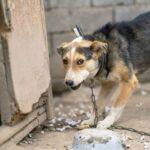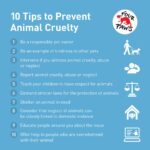In recent years, the intersection of luxury branding and ethical considerations has become an increasingly pressing topic, particularly concerning animal welfare. The conversation surrounding animal testing has evolved dramatically as consumers become more conscientious about the origins of the products they support. Among the luxury giants, Dior has often found itself in the spotlight, prompting the question: Is Dior animal cruelty-free in 2025?
To fully grasp the complexities of this issue, one must first understand the historical context. The luxury beauty industry has long been marred by the shadow of animal testing. Executives have grappled with public backlash as consumers grow more informed and demand higher ethical standards. The realization that many consumer goods are developed through methods detrimental to animal welfare has led to a significant shift in purchasing habits. Brands that once thrived on their exclusivity are now being held accountable for their ethical practices.
In 2025, consumers are armed with the knowledge of what cruelty-free truly means. It is no longer sufficient for brands to assert they do not test on animals without substantial proof. The definitions of cruelty-free have been rigidly scrutinized, and certifications such as Leaping Bunny and PETA’s Beauty Without Bunnies program have gained credence. Retailers and consumers alike now favor brands that can substantiate their claims threefold: no animal testing on products, non-involvement in third-party testing, and not sourcing ingredients from suppliers who engage in animal testing.
Dior has made promises to enhance its sustainability efforts—a campaign that resonates with ethical consumers. The brand states that it is committed to achieving environmentally responsible practices, yet questions persist regarding animal testing policies. As legislations evolve and international markets adapt to cruelty-free mandates, Dior’s responsiveness will be keenly observed. An increasing number of countries are implementing bans on animal testing for cosmetics, including the European Union, which has set a global precedent. Still, how does this affect luxury brands that traditionally catered to a different demographic?
The luxury sector operates on a different plane; it prides itself on exclusivity, exceptional quality, and craftsmanship. In 2025, this is juxtaposed with a notion that holds ethical consumerism as non-negotiable. Affluent customers who demand opulence are also, paradoxically, seeking brands that reflect their moral compass. Thus, companies like Dior face the dual challenge of maintaining a luxe image while pivoting towards more compassionate practices.
The landscape is charged with discourse on transparency. While many brands have improved their formulations to exclude harmful substances and achieve vegan certifications, they often remain reticent about their animal testing practices. The expectation for transparency is palpable. One could argue that, at this juncture, it is no longer merely about eloquent marketing; it requires a genuine commitment towards humane practices embodied in the mission and values of the brand.
Moreover, the luxury cosmetics market is witnessing a rising tide of brands that are entirely cruelty-free, often springing from the same affluent backgrounds yet establishing a fresh paradigm. These newcomers appeal not only to the ethical consumer but also to the environmentally-conscious patron, further intensifying competition. Companies that were once synonymous with luxury are now scrutinizing their practices under the lens of animal rights. Dior’s competitors are either in fierce collaboration with animal welfare organizations or have adopted entirely cruelty-free philosophies, leveraging these values as their unique selling proposition.
The brand’s social media presence amplifies the urgency of their efforts. Visual storytelling can enhance the connection between brands and consumers, engaging audiences with narratives that showcase commitment to animal welfare. Transparency in production methods, ingredient sourcing, and ethical considerations must be woven into the fabric of advertising narratives. Dior has the potential to revitalize its image while entwining it with a message that resonates deeply amidst a growing community of ethical consumers.
Yet, the juxtaposition of luxury with ethical principles is fraught with paradoxes. Often, the allure of a brand diminishes when deconstructed through the lens of ethics. In dissecting luxury items, consumers are beginning to evaluate the morality behind their purchases. The glossy advertisements of yesteryear no longer suffice in winning the hearts of conscientious buyers. Dior must navigate these waters with care, seeking to resurrect its brand loyalty through meaningful pledges that align with modern values.
As 2025 unfolds, the spotlight on brands like Dior emphasizes the need for accountability and transformation. Animal cruelty remains an issue that elicits indignation, and consumers are no longer willing to turn a blind eye. The tides of change are irrevocably lapping at the foundations of luxury retail, urging brands to redefine their identifier—no longer merely as purveyors of lavish goods but as stewards of ethical responsibility.
Consequently, whether Dior is effectively considered animal cruelty-free comes down to its actions in the coming years. The trajectory towards a more ethical future is both compelling and fraught with challenges. Luxury brands cannot afford to remain static in their ethical practices. The market demands evolution, and Dior, like its counterparts, must commit to transparency, genuine practices, and a resolute stance against animal cruelty if it hopes to reshape its legacy in the contemporary landscape of beauty and fashion.
In conclusion, Dior stands at a crossroad. The choices made in the coming years will not only determine its relevance in a rapidly changing market but will also set a precedent for luxury brands globally. The commitment to animal rights is not merely an option; it’s an imperative. How the brand will embrace this ethos and translate it into actionable commitment remains to be seen, but the world is already watching with bated breath.
